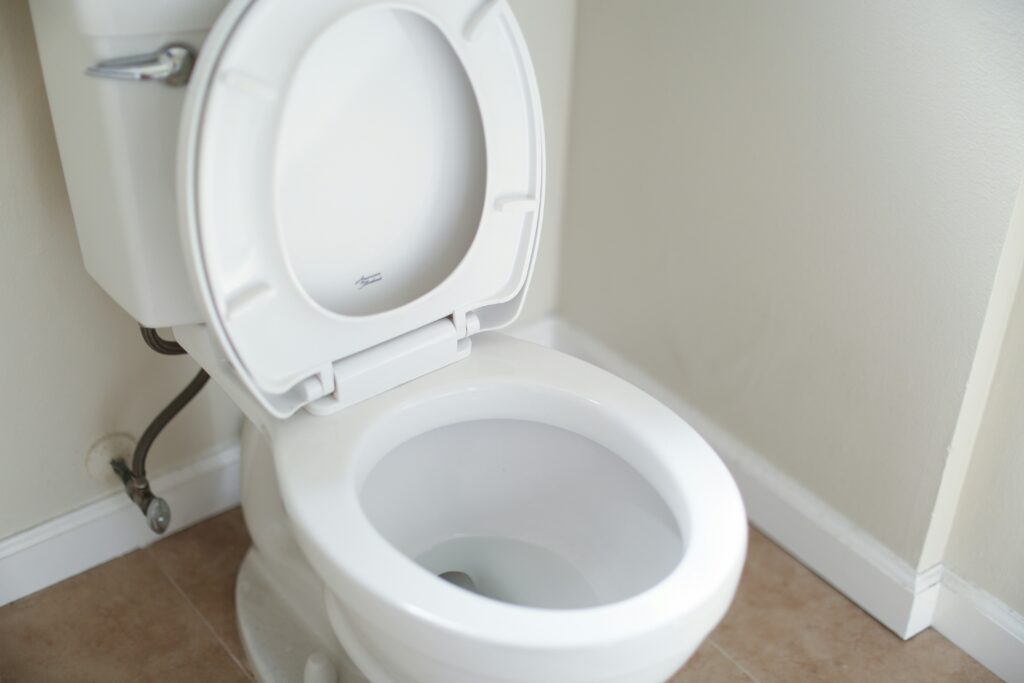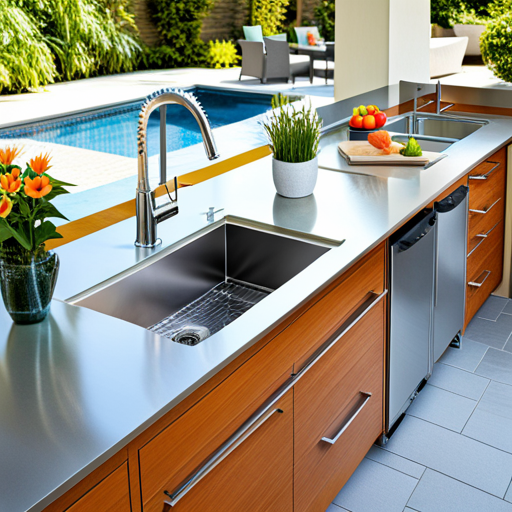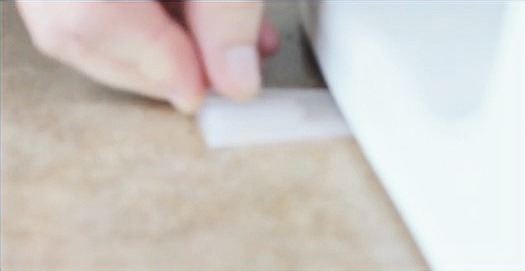Last Updated on June 14, 2024 by John Coleman

Have you ever experienced the weird phenomenon of flushing your empty toilet and it acts like it is clogged? The flush starts off great but only for a second and then the water stalls, the swirl slows, and the water rises in the bowl. How can this be? The toilet is empty but it still won’t flush. Unfortunately, this is a frustrating predicament that many homeowners experience. In this post, we will take a look at some possible reasons this could be happening and offer some potential DIY fixes to solve this problem. We will also discuss important signs that indicate you should call a professional plumber.
Understanding the Flush System and Common Reasons Why Your Toilet Clogs with Nothing In It
Before we can tackle the problem, it’s crucial to understand how a toilet works. When you flush, water rushes into the bowl from the tank, vacuuming away waste through the trap and into the sewage line. This sounds simple enough but here are some common not-so-obvious problems that can cause this process to fail:
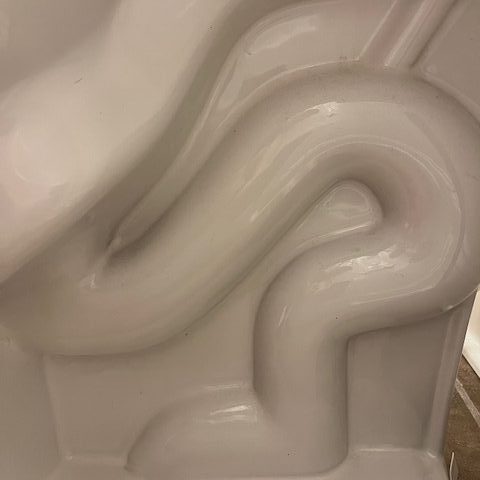
- Buildup in the trap: Over time, waste and paper can accumulate in the trap,
narrowing the passage for material to pass through. - Vent issues: Your toilet’s vent helps control the air pressure within your pipes. If blocked, the reduced airflow can lead to slow drainage, which in time results in clogs.
- Sediment buildup: Hard water can leave mineral deposits in your pipes, which reduces the flow and can cause blockage.
- Flushed foreign objects: Children love to flush toys and other objects down the toilet, causing major clogs. This may have happened without your knowledge.
If you purchase through links on this site, we may earn a small commission. See our affiliate disclosure.
Why Older Toilets Clog Easily
If you live in an older home, your toilet may be the original model from when the house was built. These toilets were made to use much more water per flush than modern ones do, which may contribute to frequent clogs. Also, older toilets may have more worn-out parts that affect the flushing mechanism.
Would a New Toilet Flush Better?
Replacing an old toilet with a newer model can help alleviate this problem. Newer toilets have improved water efficiency, and their flushing mechanisms are designed to handle waste more effectively. Additionally, modern toilets have different shapes and designs that help prevent clogs from occurring in the first place. However, before you run out and buy a new toilet, let’s see if we can save some money and fix the one you have.DIY Fixes for Unclogging Toilet With Nothing In It
Let’s take a look at some DIY fixes that may help solve the problem before calling in a professional plumber:
Plunger
I know this is the first tool many will reach for when a clog is suspected, but it has to be mentioned. It should be noted that not all plungers are the same. You should be sure the plunger you have fits your toilet bowl drain. Ensure you have a tight seal over the drain and give it a few vigorous pumps. If the water level is high, use a bucket to remove some of it. The suction action should help dislodge the clog. If you notice that you are frequently having to plunge your toilet, you may have some mineral or waste build-up that needs to be cleared. Some of the methods below can also be used as maintenance tasks.
Dishwashing Liquid and Hot Water
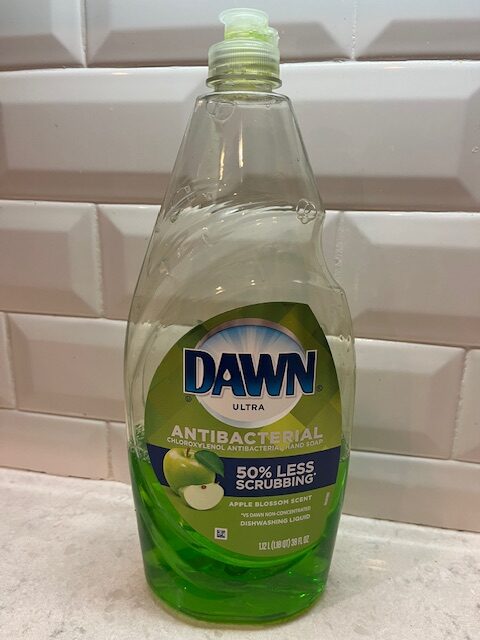
Soap solution can work wonders. Dishwashing liquid is designed to break down dirt/grease and it can work on your clogs too. Though you can use any dishwashing liquid, I typically use Dawn for both sink drains and toilet clogs. It seems to do a good job breaking down the build-up.
Pouring a mixture of hot (but not boiling) water and dish soap into the bowl can break down the unseen clog. The lubricating soap and hot water concoction work together like a charm.
(Important: I do not recommend pouring “boiling” water in your toilet as it could cause the porcelain to crack.) Hot water from the bathtub is sufficient.
Baking Soda and Vinegar
Think of this as a non-hazardous drain cleaner. This dynamic duo can fizz up a solution that breaks down what’s causing the blockage. You want to mix the baking soda and vinegar in equal parts. I prefer to start with 1/4 cup of baking soda and 1/4 cup of vinegar. Do not mix the ingredients together before pouring into the toilet….it will cause a big mess. Instead, pour the baking soda in the toilet bowl and then follow it with the vinegar. It will start to fizz but will stop after a few seconds. Let the ingredients sit for 15 minutes so they can work. Then, get a large bowl of hot water from the bathtub faucet and pour it in from a height of about 1 foot from the top of the toilet bowl. This will push the mixture even further into the drain. Let it sit for about 5 more minutes to see if the clog releases. Then, flush the toilet. If the toilet flushes correctly, be sure to flush it a few more times to allow the clog to adequately clear and to see if it is flushing consistently.
Wire Coat Hanger
Straighten a wire coat hanger but remember, gentle probing is key. No one wants a scratched-up toilet bowl. You do not want to be forceful with the wire, and you should always push it in a clockwise rotation. Once you feel resistance, pull it out of the toilet and hopefully the clog will come with it.
Enzyme-based Drain Cleaner
These natural cleaners are gentle on your pipes and tough on organic waste. Plus, they are environmentally friendly! The instructions on the bottle will tell you the recommended amount to pour into the toilet bowl. Let it sit for several hours (best if you leave it overnight). Then, flush the toilet a few times to see if the clog has cleared. I recommend using Green Gobbler because it is safe for your pipes and good for your septic system.
Toilet Auger (also known as a Plumbing Snake)

If all else fails, it may be time to bring in the big guns – a plumbing snake. This tool is specifically designed to clear out clogs in pipes and toilets. Insert the head of the snake into the toilet, then slowly turn the handle as you push it down into the drain. Once you reach the clog, twist and push until it breaks up and clears. Be sure to wear gloves and protective eyewear while using this tool. For DIY use, there is no need to buy the most expensive one.
Wet/Dry Vacuum (also known as a shop vac)
A wet/dry or shop vac can be a lifesaver when it comes to unclogging toilets. Simply place the vacuum hose into the toilet bowl and create a strong seal around the drain. Turn on the vacuum and see if it sucks out the clog. If not, try adjusting the position of the hose or using more suction power.
If you already have a wet/dry vac, that is great. Just be sure to disinfect and change the filter after you use it on your toilet. However, if you decide to purchase one to perform this task, again, I don’t recommend buying the most expensive one. You will likely want to purchase a mid-grade quality model that you can use for other projects in the future.
(Important: Do not attempt this maneuver with a regular household vacuum cleaner. It is not equipped to handle large amounts of water and it does not have the suction power needed to clear the clog anyway).
Preventative Measures to Keep Your Toilet from Clogging Again
Maintenance is crucial. Here are a few tips to prevent clogging in the future:
- Regular cleaning: Keep the pipes clean to prevent build-up. You can intermittently use the enzyme toilet drain cleaner discussed above.
- Be mindful of what you are flushing: Only human waste and toilet paper should go down your toilet. Avoid flushing items such as baby wipes, feminine hygiene products, or paper towels.
- Use less toilet paper: It’s easy to use too much toilet paper, leading to clogs. Be mindful of how much you are using and try switching to a thinner brand if needed.
- Flush Frequently: If you have a larger family or frequent guests, consider flushing multiple times during and after use to prevent an overload of waste in the pipes.
- Teach Children Proper Flushing Habits: It’s important to educate children on what can and cannot be flushed down the toilet. This will help prevent mishaps like toys or other objects being flushed.
- Invest in a water softener: If you have hard water, consider a softener system to prevent mineral build-up.
If you purchase through links on this site, we may earn a small commission. See our affiliate disclosure.
When to Call a Professional Plumber
There comes a time when even the most determined DIYer needs to surrender to the expertise of a professional plumber. If you’ve tried everything and the clog persists, it could be a more serious underlying issue. Unusual noises, water backing up in other places, or a toilet that frequently clogs are signs that you might need help from the pros.
Conclusion
Toilets aren’t the flashiest feature in your home, but they’re definitely one of the most crucial. Keeping up with maintenance can save you from a lot of hassle, and knowing a couple of DIY fixes can be super handy. However, if you’ve got a stubborn problem that won’t go away, it’s probably time to call in the pros. No need to struggle with your tools if the clog’s not moving – sometimes, getting some expert help is the smartest thing to do.
You may also like:
10 Easy Steps to Fixing a Toilet Rocking on a Tile Floor
Disclaimer: This post is for informational purposes only. If you are uncertain about any DIY plumbing task, it’s best to contact a professional plumber to ensure your safety and prevent potential damage to your property.

